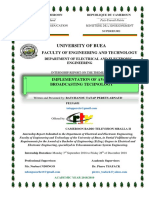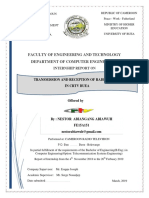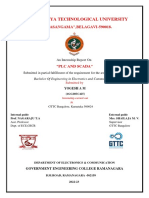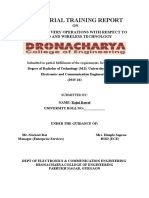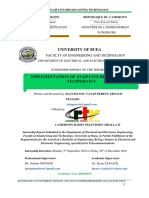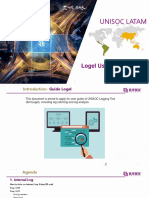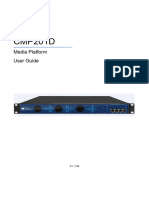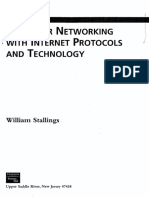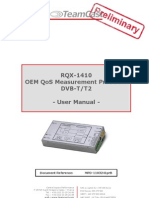0% found this document useful (0 votes)
90 views24 pagesJesus in Control Table of Contents
The document discusses the internship report of Batchanou Tatap Perets Arnaud on implementing AVoIP live broadcasting technology at Cameroon Radio Television. It provides background on CRTV, describes the various techniques used for signal retransmission, and details the implementation of an AVoIP system using OBS Studio software to enable live streaming of audio and video over the internet for television production. The report is intended to benefit CRTV and other broadcast organizations in deploying this technology for live events and applications like teleconferencing and e-learning.
Uploaded by
nestor martourezCopyright
© © All Rights Reserved
We take content rights seriously. If you suspect this is your content, claim it here.
Available Formats
Download as PDF, TXT or read online on Scribd
0% found this document useful (0 votes)
90 views24 pagesJesus in Control Table of Contents
The document discusses the internship report of Batchanou Tatap Perets Arnaud on implementing AVoIP live broadcasting technology at Cameroon Radio Television. It provides background on CRTV, describes the various techniques used for signal retransmission, and details the implementation of an AVoIP system using OBS Studio software to enable live streaming of audio and video over the internet for television production. The report is intended to benefit CRTV and other broadcast organizations in deploying this technology for live events and applications like teleconferencing and e-learning.
Uploaded by
nestor martourezCopyright
© © All Rights Reserved
We take content rights seriously. If you suspect this is your content, claim it here.
Available Formats
Download as PDF, TXT or read online on Scribd
/ 24

